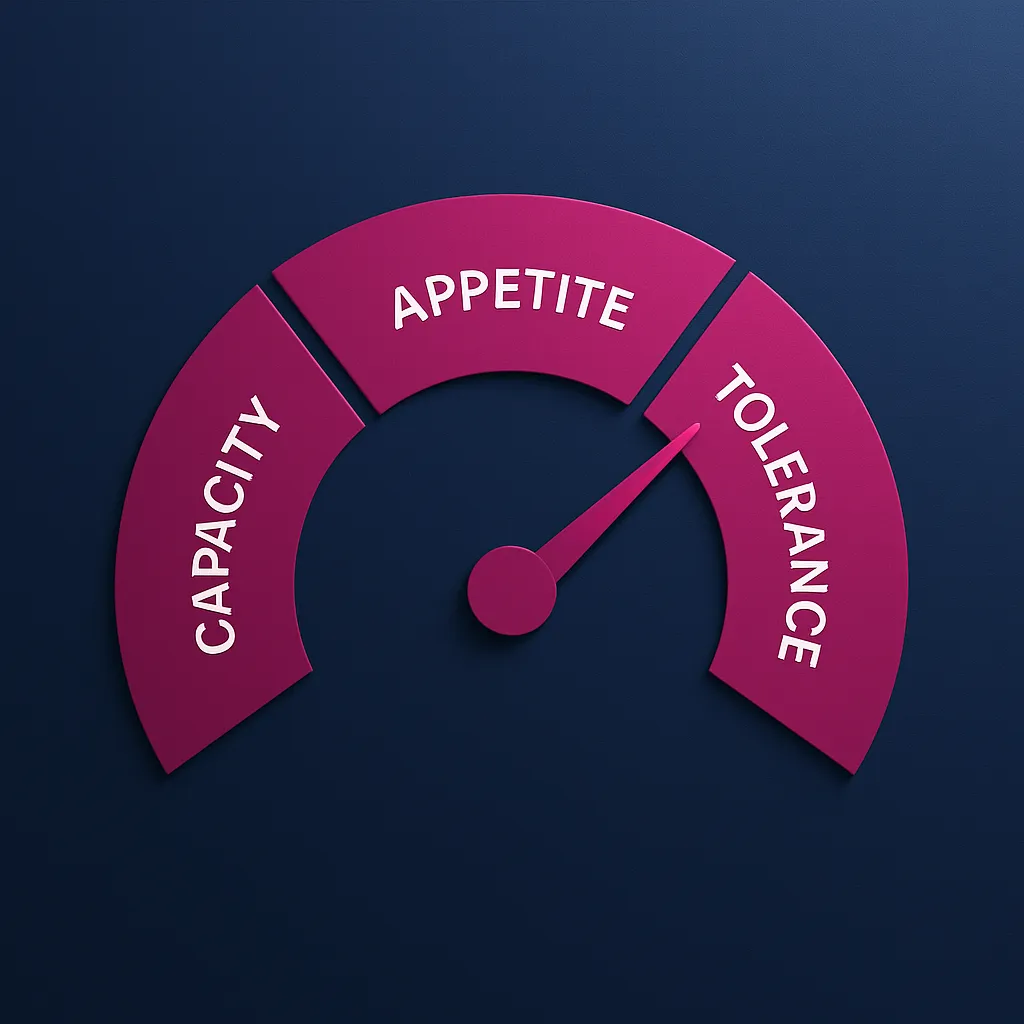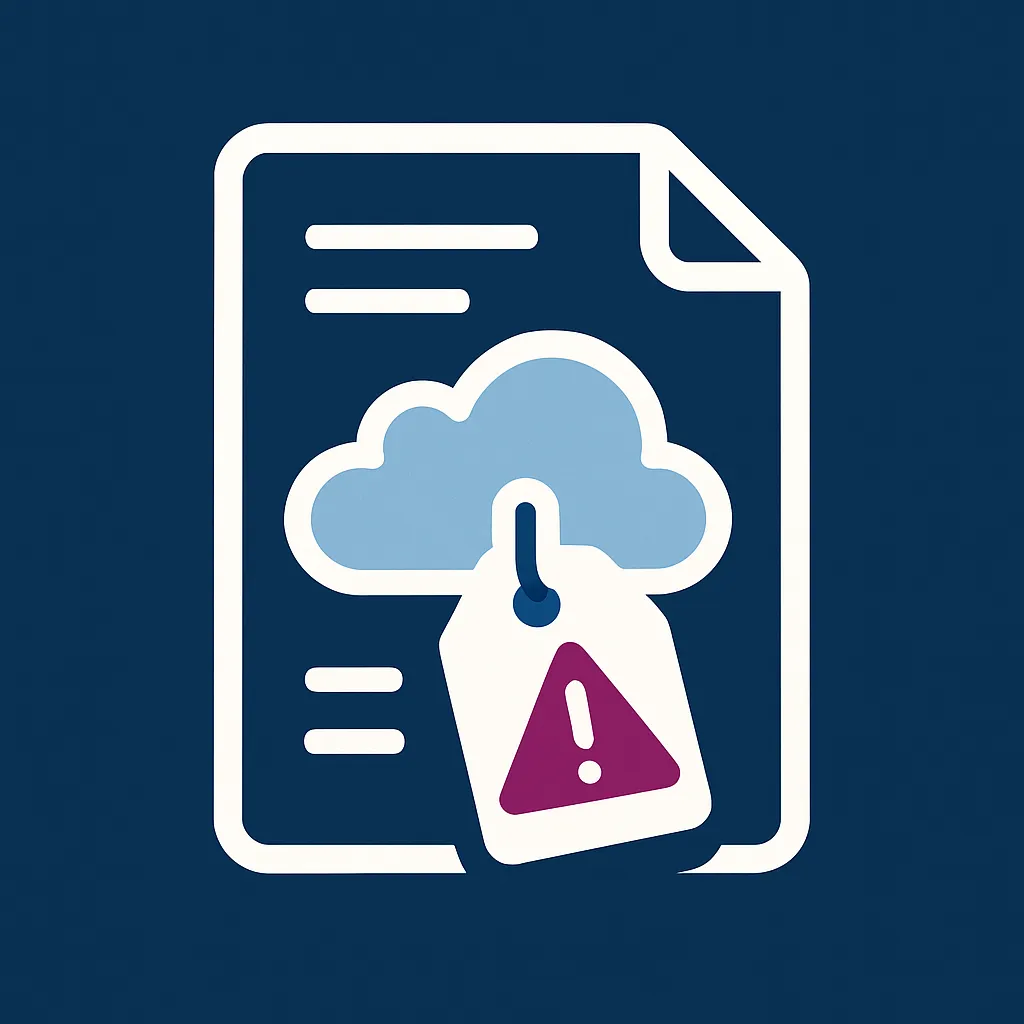Executives rarely lack data or effort. What stalls progress is unclear ownership and slow decisions. This post shows how to set up the risk work so your teams move fast and stay safe. You will choose a structure that fits your next few quarters, make roles explicit, and put a leadership forum in place that actually decides.
We will walk through three common structures, show who owns what across business, oversight, and audit, and outline a meeting rhythm that keeps risks visible without drowning people in slides. Then we will show how to grow from a small crew to a mature function without buying tools you do not need.
Expect practical checklists, a short decision tree, and one simple action at the end. The aim is clarity you can use today - not a theory lesson.
Centralized vs. Decentralized: pick what fits you now
Key term: Operating model - how your company assigns risk roles, decisions, and standards across central teams and business units.
Two firms face the same risks yet move at very different speeds. The difference is the operating model. Your job is not to pick a perfect structure forever. It is to pick the right one for the next few quarters, make decision rights explicit, then adjust as facts change.
Optimization criteria:
- Speed: fewer handoffs, local authority, faster exceptions
- Consistency: one set of standards, one language, one dashboard
- Adoption: people follow what they helped shape
- Cost: duplication hides in decentralized setups, bureaucracy hides in centralized ones
Centralized
Centralized model - a core risk team sets policy, tooling, key risk indicators, and approvals while business units operate controls and report.
Use when regulation is high, incidents or audits exposed gaps, or you need to stabilize quickly.
- Strengths: clear accountability, consistent measures, and easier oversight.
- Watchouts: slower local decisions and a reputation for being a blocker.
- Make it work: publishing non-negotiables, running a tight exception workflow, and holding a monthly enterprise risk committee that closes actions, not just reviews slides.
Federated
Federated model - a central team sets minimum standards and language while business units tailor controls to context and own results.
Use when you run distinct products, geographies, or customer promises.
- Strengths: balance of consistency and local fit plus healthier ownership.
- Watchouts: drift over time and parallel processes.
- Make it work: with a common taxonomy, shared tools, and a steady rhythm where domain councils surface issues and choices to a central forum that decides.
Decentralized
Decentralized model - business units own risk end to end with a small central core for policy, key risk indicators, and exceptions.
Use when decision speed is the top priority for a short window or your risks live inside product and operations.
- Strengths: velocity and deep context.
- Watchouts: duplication and uneven quality.
- Make it work: time boxing the choice, defining guardrails, and scheduling a formal review that often shifts you to a federated model once the sprint ends.
When to pivot the model
- A material incident or near miss revealed unclear ownership
- New regulatory pressure or obligations landed
- M&A introduced new business models or geographies
- Growth outpaced process maturity
- Audit findings showed gaps across multiple teams
Quick decision tree
Start at the top and stop at the first Yes.
- Highly regulated or under formal scrutiny right now → Centralized for now
- Several distinct businesses or regions with real differences → Federated
- Raw speed is the priority this half → Decentralized with guardrails, then reassess
- None of the above → Federated as the default path
What to centralize vs. localize
Key term: Key risk indicator (KRI) - a small metric that signals rising risk in time to act.
- Centralize: policy and standards, common KRIs and thresholds, exception and risk acceptance workflow, risk taxonomy, core tooling, enterprise reporting
- Localize: control design and operation, issue remediation, contextual training, local KRIs that map to the common set
- Shared: scenario planning, risk assessments, and validation
Quick move
Write down your provisional model and three non-negotiables.
Example: our model for the next two quarters is Federated. Non-negotiables are 1) one policy set, 2) one exception process, 3) shared KRI definitions. Name an owner and a review date. If facts change, the model changes.
The Three Lines Model - who owns what
Key term: Three Lines Model - a simple way to split risk work into business execution (first line), risk oversight (second line), and internal audit (third line).
Clear roles beat clever tools. If everyone is “monitoring risk,” no one is deciding. Use the Three Lines to make ownership visible, keep decisions fast, and prevent handoffs from turning into dropped balls.
Plain roles at a glance
First line - the business. Owns processes, people, vendors, and controls. They spot issues first, decide fixes, and deliver outcomes. They write procedures, run playbooks, and report what is real on the ground.
Second line - risk, compliance, security, privacy. Sets minimum standards and taxonomy, helps teams design controls, challenges the quality of risk assessments, and tracks exceptions across the company. They do not run the business process. They shape it and make variance visible.
Third line - internal audit. Provides independent assurance that the first and second lines work as designed. They validate effectiveness, test evidence, and report results to executives and the board without being pulled into day to day operations.
A quick incident walkthrough
An operations team detects a service outage that might expose customer data. The first line triages, contains, and communicates to customers according to the runbook. They open an issue, capture evidence, and propose a fix with a date. The second line checks whether policy was followed, confirms reporting thresholds, and challenges the proposed fix or timing if residual risk would stay too high. If an exception is required to keep shipping, they route it into the acceptance workflow and make sure a review date is set. The third line does not jump into firefighting. Later, they test the control set, verify that corrective actions actually reduced risk, and share results with the audit committee. One event, three roles, no confusion.
Decision rights that matter
Key term: Risk acceptance - a formal choice to live with a known risk for a limited time, usually with compensating controls and a review date.
Give these decisions clear owners and thresholds so escalations do not stall work:
- Approve policy and standards. Second line drafts, executives approve, board committees review the highest level items.
- Accept residual risk above threshold. First line accepts small items. The CRO or an enterprise risk committee takes bigger ones. Anything truly material goes to the board committee.
- Pause high risk work. Give named leaders the authority to stop a launch, vendor cutover, or rollout if risk spikes beyond appetite.
- Grant and track exceptions. One intake, one record of compensating controls, one review date, one owner.
- Measure appetite vs. reality. Second line runs the dashboard and calls out breaches. First line owns fixes.
Anti patterns to avoid
- Shadow second line. Business teams acting like policy setters without alignment.
- Audit as advisory. Internal audit designing controls they later test, which breaks independence.
- Rubber stamp acceptances. Exceptions with no end dates or follow through.
- Split languages. Different taxonomies per team, so reports do not add up.
Quick fixes you can ship
- Publish three one pagers: role cards for first, second, and third line that say what they own, what they decide, and what they never do.
- Stand up a single exception intake with required fields: risk description, temporary controls, owner, review date, and the decision maker.
- Add one sentence to every major policy: “If you must deviate, use the exception workflow.” Link it.
- Schedule a short quarterly calibration where first and second line review two recent acceptances and two closed issues to make sure decisions match appetite.
Clarity is a leadership gift. When roles and decision rights are explicit, teams move faster, issues surface earlier, and your board sees a coherent story instead of competing narratives.
Risk Committee - design a forum that makes decisions
Risk committee - a cross functional leadership group that makes risk decisions and sets direction, not a status meeting.
Most “risk meetings” read slides and run out of time. A real risk committee exists to make choices that unlock work and protect the company. Design the forum so it is small, clear on scope, predictable in cadence, and tied to the board without turning into theater.
Purpose that fits your stage
A good charter answers three main questions: what risks we decide on here, what we escalate, and what success looks like.
- Scope: enterprise level risks that cross teams or carry material impact. Domain councils (like Cyber, Product, or Safety) prepare topics and feed this forum.
- Decisions: approve risk appetite, accept or reject high residual risks, prioritize company-wide fixes, and trigger escalations.
- Success: decisions made, owners named, dates set. Track decision hit rate (how many decisions per meeting) and follow through.
Who sits in the room
Keep it tight so you can decide, not debate.
- Chair is the CRO or COO. Add two to four executives who own major risk areas. Include Legal. Invite Internal Audit as observer.
- Bring business owners for the items on the agenda. Rotate seats rather than growing a standing crowd.
- Name a secretary to manage agendas, notes, and action tracking. Publish outcomes the same day.
Cadence and the pack
Key term: Risk appetite - the level of risk the company is willing to take to meet goals.
Meet monthly at the enterprise level. Board committees meet quarterly and take the largest items. Each meeting runs from a standard pack so leaders arrive ready to decide:
- Top risks with trend and owner
- KRI breaches since last meeting and what changed
- Risk acceptances pending or approved, with review dates
- Cross team actions due or at risk
- Regulatory or audit matters that require attention
- Two priority deep dives prepared by a domain council or business unit
Domain councils submit deep dives to the Secretary at least 14 days in advance for distribution.
How the meeting runs
Make the hour count.
- first 5 min: Open on decisions we must make today. Confirm quorum.
- next 10 min: Review KRI breaches and any appetite breaches. Decide on immediate actions.
- next 30 min: Two deep dives. Each ends with a clear ask - accept risk, approve plan, or escalate.
- next 5 min: Exceptions and risk acceptances over threshold. Decide or send back with a specific gap to close.
- last 5 min: Read back owners and dates. Chair states the decisions in plain language. Secretary records and publishes.
Signals it works
- Fewer meeting attendees over time, more decisions
- Shorter slide decks - more one page briefs with a clear ask
- Risk acceptances have end dates and compensating controls
- KRI breaches are reviewed within the week, not the month
- Less questions to the Board because the story is coherent
Red flags
- The committee hears the same topic three meetings in a row with no decision
- Deep dives have no ask and end in “we need more analysis”
- Exceptions are granted with no review date
- Domain councils exist on paper but never surface issues
- Minutes read like a transcript, not a list of decisions
Charter on one page
State the purpose, scope, membership, quorum, cadence, decision rights, escalation path, and a short list of effectiveness metrics. Keep it public inside the company. When people know what the forum decides - and how - they bring better choices and the right trade offs.
Scaling your risk function - grow in stages, not in leaps
The goal is not a big team. It is the right capabilities at the right time. Scale risk like product: ship the minimum that works, learn, then expand. You can cover a lot with a small crew if you focus on a few things done well.
Stage snapshots
Early stage - stabilize and prove value. One leader with range covers risk, privacy, and security basics. Borrow experts from legal, IT, and finance. Set one policy, one exception workflow, and a simple risk register. Publish a short monthly update that shows decisions made, not just risks found.
Growth stage - specialize where risk shows up. As products and regions multiply, add owners for third party risk, continuity and recovery, and privacy. Stand up domain councils that feed a small enterprise risk committee. Keep standards central and let teams tailor controls. Track a handful of KRIs that change behavior, not a dashboard of noise.
Enterprise stage - integrate and separate. You now need clear lines between those who set standards, those who run controls, and those who test them. Add risk analytics to spot trends and a formal testing plan so findings do not depend on heroics. Expect a tighter link to audit and the board, with quarterly reviews against appetite.
How capabilities scale
- Foundations: shared taxonomy, policy set, issue and exception tracking, and a real intake for new risks
- Assurance: from peer checks to planned testing and evidence you can trust
- Response: from ad hoc incident handling to rehearsed playbooks owned by the business
- Reporting: from a one pager to a simple pack with trends, acceptances, and actions due
- People: from generalists to a mix of a few specialists where risk concentrates
Buy vs. build
Buy when speed or repeatability matters more than edge. Managed due diligence, scanning, and evidence collection save time and reduce variance. Build when your process is unique to your product or promise. Whatever you buy, keep ownership of your risk taxonomy, thresholds, and acceptance rules so vendors do not define your program.
Signals to shift up a stage
- Incidents or near misses repeat for the same cause
- Exceptions pile up with no review dates
- New regions or products stretch one set of controls too far
- KRI breaches are seen late or not acted on
- Board or regulator asks for clearer appetite and follow through
Common traps to avoid
- Tool first. A platform without roles and workflows becomes a parking lot for issues.
- Paper program. Policies no one reads and KRIs no one owns.
- Invisible second line. Advice with no authority to challenge or escalate.
- One size fits all. Controls that slow low risk areas and still miss the real hotspots.
Short step
Write a simple six quarter roadmap. In quarter 1, pick the three capabilities you will nail next: for many teams that is exception workflow, third party standards, and a basic testing plan. Name owners, draft the one page outcomes, and set review dates. Revisit the plan each quarter. If facts change, shift the order. Scaling is not a leap. It is steady, visible progress that lets the business move fast and stay safe.
Wrapping up
You now have a actionable plan: pick the structure that fits your reality, clarify who owns which decisions, and run a small forum that chooses and follows through. Done well, this reduces escalations, shortens debates, and builds trust with your board.
Your next move is simple: use the decision tree, write three non negotiables for your structure, and set a review date. Do it in under 10 minutes. Share the one pager with your leadership team so everyone sees the same picture.





